A Quick Turnaround
Owner and CEO Matt Hinson, with a background in hedge fund management and investment banking, is growing CDC Woodworking in Pensacola, Fla., for today’s market.
Owner and CEO Matt Hinson, with a background in hedge fund management and investment banking, is growing CDC Woodworking in Pensacola, Fla., for today’s market. The seeds of the business were sewn by Hinson’s father, Dr. William Hinson, a retired ophthalmologist who developed a passion for furniture making and woodworking as a hobby while still in medical school.
“Believe it or not, this business never made a dollar until 2014. In fact, it lost money every single year until then. It was just a hobby for my father. It couldn’t even pay for itself, but he had done jobs for friends by word of mouth to stay busy and because he loved it. And I had grown up doing it with him, so I sort of came in knowing the basics and had a business sense,” says Hinson.
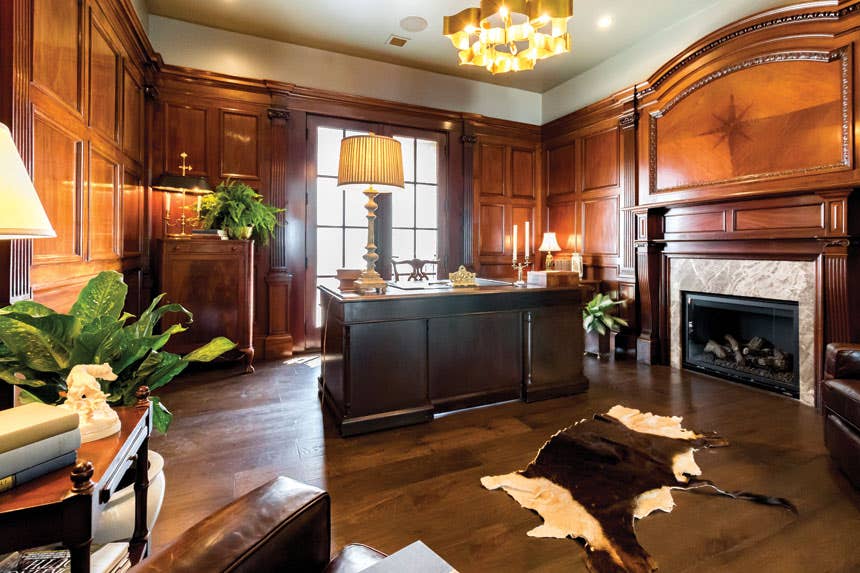

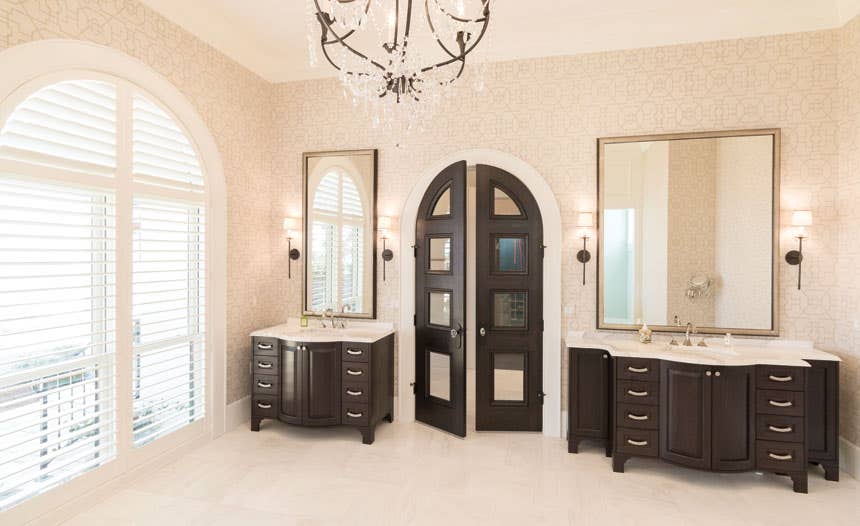
Taking dad’s advice
Hinson, born and raised in Pensacola, helped his father build the family home in the late ’80s, which included making the doors, windows, cabinetry and millwork. CDC, an acronym for Custom Design Woodworking, was formed in 2004 to work on high-end homes in the area.
“We had two or three employees until 2013 when I got involved, before I left investment banking,” says Hinson.
Today, the turnkey custom cabinetry and millwork shop operates out of a 25,000-sq.-ft. facility with 13 employees.
Hinson’s journey to shop owner has obviously had some twists and turns.
“My dad told me not to be a doctor, that I should be in business,” says Hinson. “So, after high school, I went the business route and the progression truly was real estate development. I helped develop a couple of large retirement communities in south Florida and I financed them with public offerings, with bonds, and that’s how I ended up working for an investment banker.”
He was also running hedge funds, structuring IPOs and working on jobs all over the country in the health care and senior living industry. He settled in Jacksonville, Fla., with his wife Stephanie and started a family.
“I was traveling five days a week, which is no way to live, and worked for corporate publicly traded companies which was straining. I liked being my own boss because I can teach myself anything. What brought us back here was the fact that we had an opportunity to turn this into a real business, and make something that we could pass down to our children and that they could grow up in.”
Hinson brushed up on his woodworking abilities and added new skills, including computer-aided design. He’s also the chief estimator and has his hand in numerous other roles.
“I believe that I must be able to do anything my employees can do, or I can’t hold them accountable. Everything in here, I will go do. I’ll set up a molder and do molding, I’ll build an exterior front door. I learned how to use all of this equipment in a few months.”
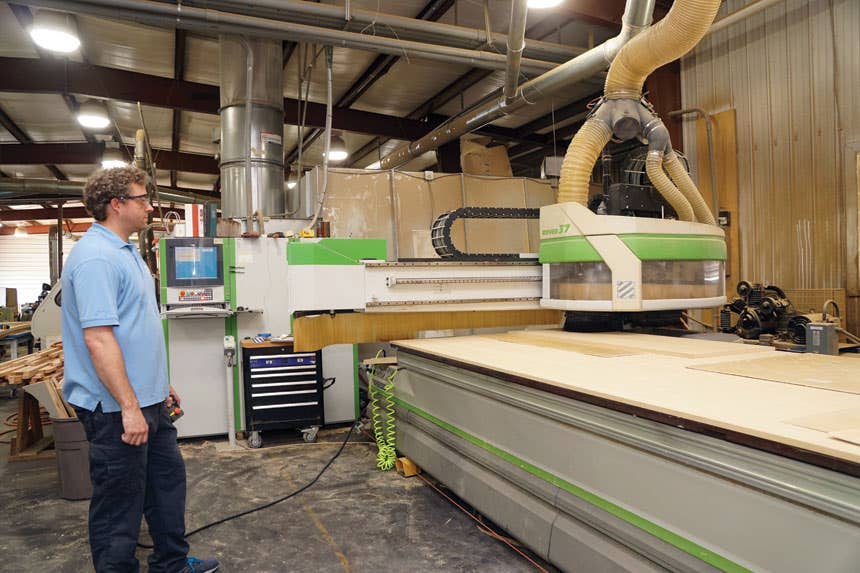
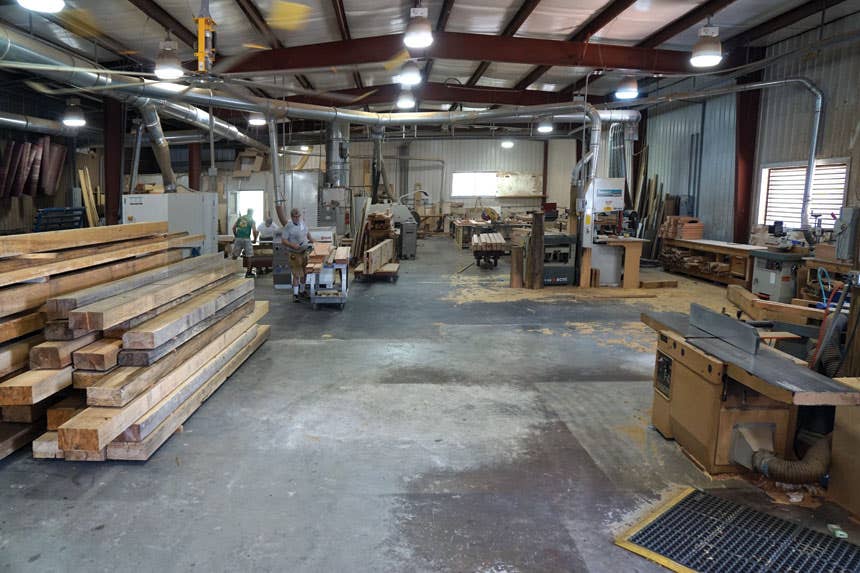
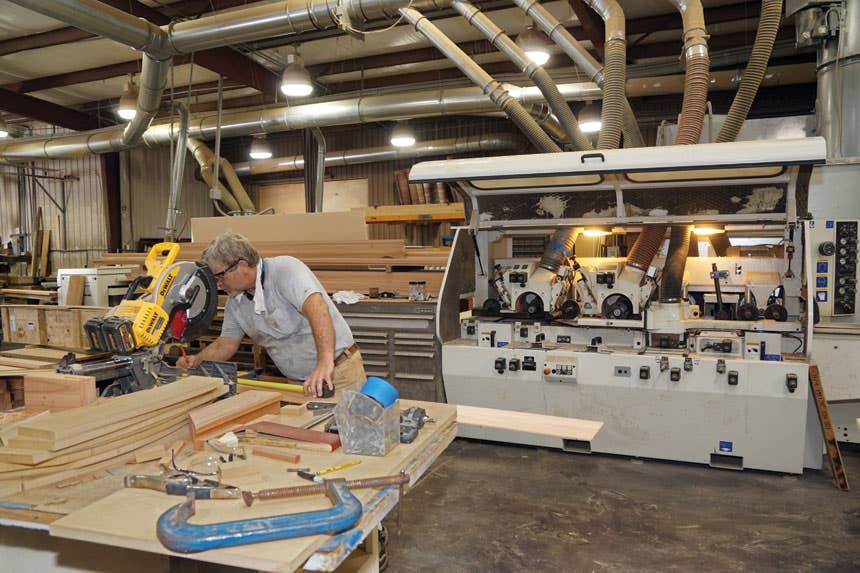
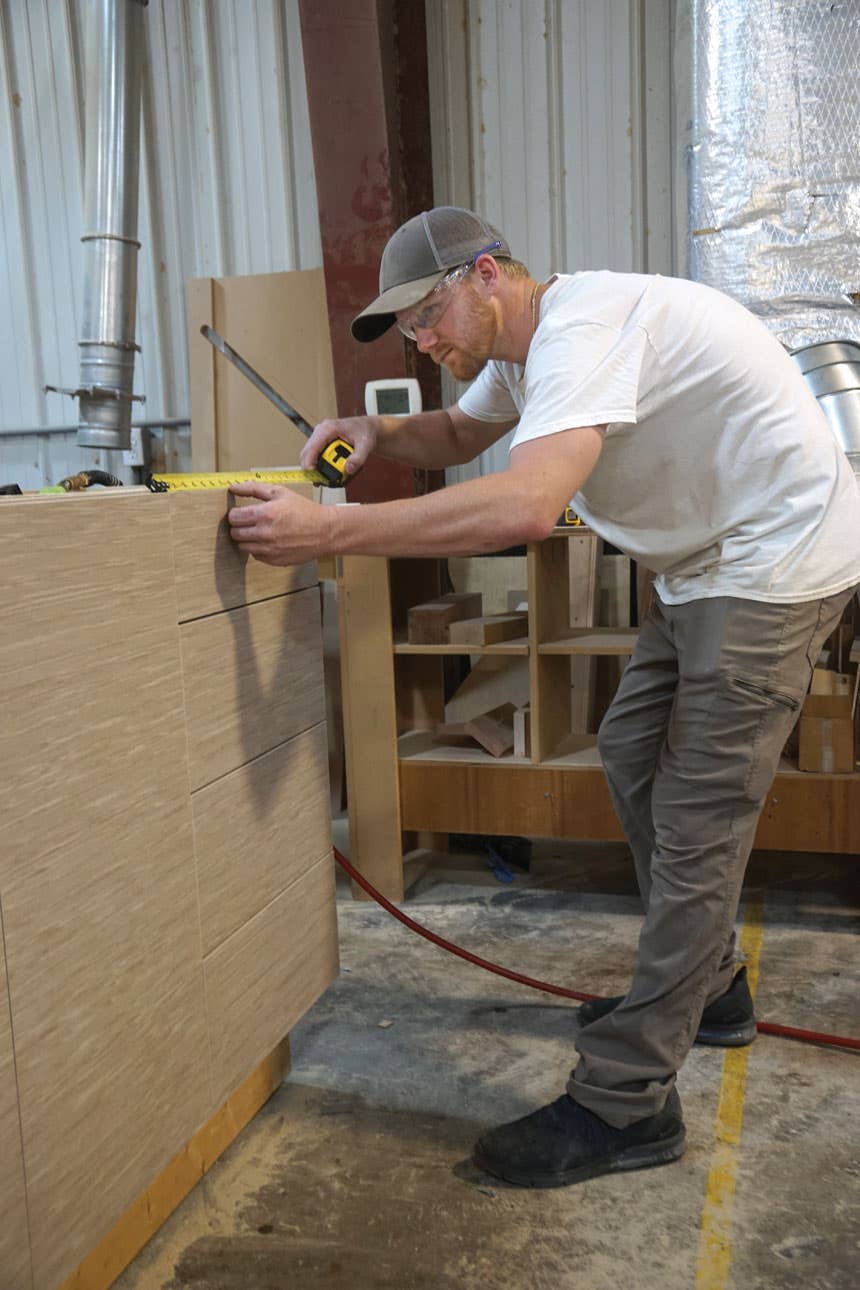

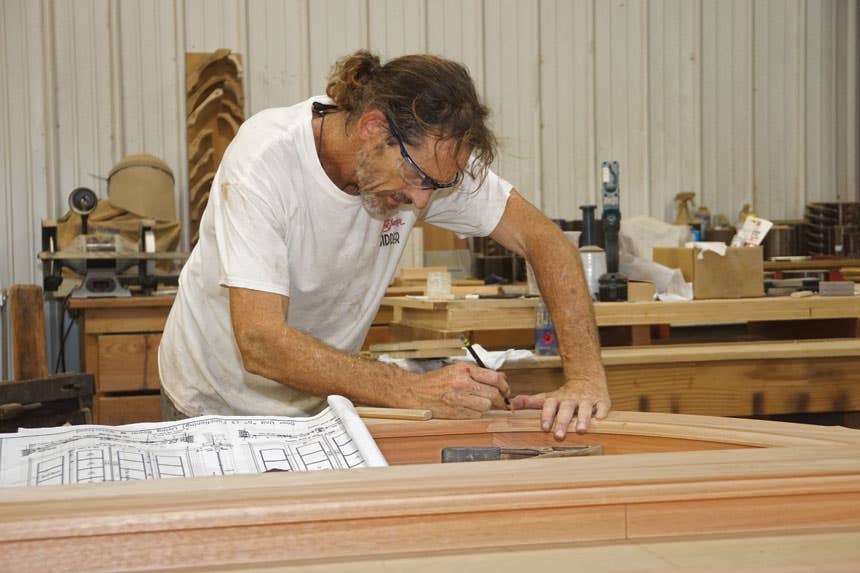
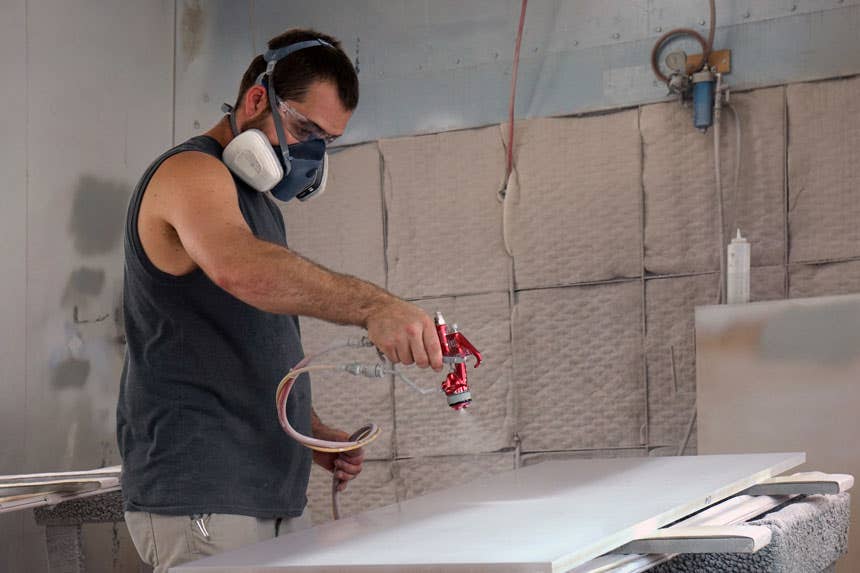
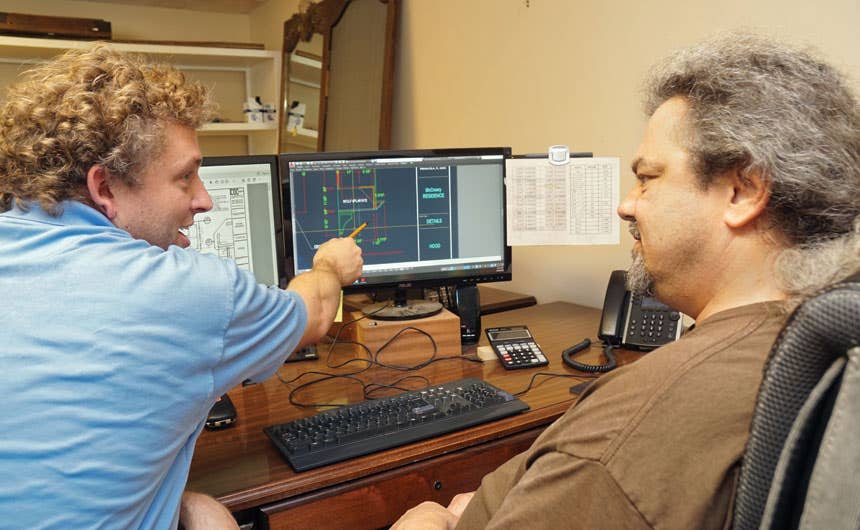
Two shops in one
Before Hinson got involved, CDC was averaging four to five jobs per year. Today, 50 to 60 jobs run through the shop annually. The growth is attributed to a professional website, solid relationships with area contractors, and word-of-mouth marketing.
The architectural millwork side of the business has produced some memorable projects: enormous timber frames, elaborate floors, hurricane-rated exterior doors, and custom moldings for the Grand Floridian Resort at Walt Disney World.
“I think one of the things that separates us is we’re about the only architectural millwork shop and cabinet shop around, so there are two sides to this business and they almost run completely independently,” says Hinson.
“One of the biggest clients we have is an eye surgeon downtown, one my dad was a surgeon with. He had the biggest contractor in the city build his house and once they worked with us, our building knowledge of general construction on top of architectural millwork and cabinetry really set us apart for that job. We were supporting the entire effort, the exterior fretwork, exterior doors, issues of construction that they needed strange parts created to make the house what it needed to be. And that’s where the architectural side supports the cabinetry side because contractors get a partner when building a house, instead of just a cabinet provider. That’s been huge.”
About two thirds of the shop’s work flows from six general contracting firms.
“We don’t have a giant showroom,” says Hinson. “But we have our facility and when customers come through, they’re impressed. The trust is there, and then you get to do what you need to do to make the job perfect.”
Customers don’t often stop by to inquire, but as Hinson points out, most people buying a high-end cabinet are not walking in off the street. Referred customers are better at understanding the value and pricing of the products they seek.
“I think if there has been anything that has been an incredible growth over the last three years is that you struggle to justify what your product costs, until the reputation grows, and the word of mouth grows, then you don’t ever have to justify what it costs again because people know you’re ethical, you’re fair, and they’re going to get what they pay for.”
Hinson strives to keep a somewhat local clientele.
“It is so much harder to make money when you have to travel. You can charge a little more, but it doesn’t justify the lost time traveling and correcting little mistakes. I would say our core market is within a one-hour radius, which is all of Pensacola Beach, all the way through Gulf Breeze and the barrier island.
The shop‘s residential designs may appear chic and simple, but are rather extravagant and often full of complexity, according to Hinson.
“We did a floor for an architect from New Orleans that required random width white oak. It couldn’t even have a pinhole in it and had to look like random width boards, so we had to create the veneers. It looks simple but there’s nothing simple about it,” he says. “We also did a bathroom vanity with waterfall bubinga veneer for the panels and all bubinga hardwood. So, there were elliptical inverted panels with the molding. It was extremely difficult. Some of this work is just mind blowing.”
A reliable workforce
Hinson proudly touts having seasoned, knowledgeable employees. He considers them an investment and treats them well.
“All of our guys are skilled. I don’t have cheap labor. There was an incredible shop around here back in the day that did work all over the world and all the casinos in Biloxi (Miss.). My millwork foreman, one of my engineers and two other employees are from there.
“Other than that, we’re the employer of choice. I pay more and give paid vacation. I let them be sick when they need to be sick. I take care of everyone in different ways when they need it. My wife and I take them out to dinner, give them bonuses, and we have a Christmas party.”
The commitment pays off. If Hinson needs them to work late to push a job, everyone steps up to the plate. And they put quality first.
“I think when working in a highly customized environment like this, it’s important for employees to see and catch errors before they leave the shop because everything is so unique and individual,” says Hinson.
The latest addition to the shop is a Biesse Rover B CNC, replacing a former model. Other machines are scheduled to be replaced in the short term, but only after Hinson completes extensive research.
The company works with a variety of domestic and exotic hardwoods. For cabinets, cherry is very popular because of its high quality, affordable price, and ability to stain well. Exterior materials used include Honduran mahogany, Spanish cedar, red grandis, and sunken heart pine.
Choosing a direction
Hinson believes the economic climate is as vibrant and promising as ever, as he’s recently been able to call the shots much more than he was a few years ago.
“I’ve been able to become so selective with what jobs I bid,” he says. “There’s so much work, no one in the city can do it all.”
The steady business presents Hinson with a slight dilemma. If the economy continues to improve, he wants to expand to keep up with demand. But given his background, he knows what to watch out for.
“Where to go next? That is truly the challenge. Do we double in size? Because I could with the amount of work. With this facility, I could easily double our number of employees, buy a few more pieces of equipment, and double our output. But it’s such a large risk capital-wise. You can chase the economy as it grows, but if it falls off a cliff, do you really want to be holding all the overhead? That’s where my toughest decisions are. When are we big enough for the market?”
Contact: CDC Woodworking, 101 S. Pace Blvd., Pensacola, FL 32502. Tel: 850-760-2225. www.cdcwoodworking.com
This article originally appeared in the July 2018 issue.







